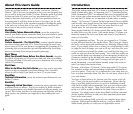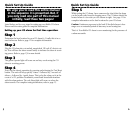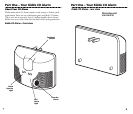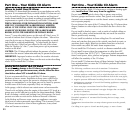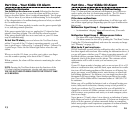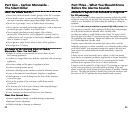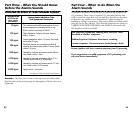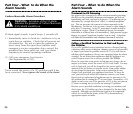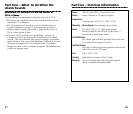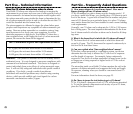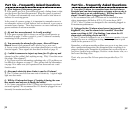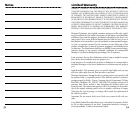
20
19
Part Two – Carbon Monoxide -
The Silent Killer
Home Safety Tips
What You Can Do...
•Buy only appliances approved by a nationally recognized
testing laboratory.
•Choose fuel-burning appliances that can be vented to the
outdoors, whenever possible.
•Make sure appliances are installed according to manufacturer’s
instructions and local building codes. Most appliances should
be installed by professionals and should be inspected by the
proper authority after installation.
•Have the heating system, vents, chimney and flue inspected
and cleaned by a qualified technician every year.
•Follow manufacturer’s directions for safe operation of all
fuel-burning appliances.
•Examine vents and chimneys regularly for improper connections,
visible rust or stains.
•Open a window when a fireplace or wood-burning stove is in
use, and provide adequate outdoor air for furnace and water
heater.
•Notice problems that could indicate improper appliance operation:
– Decreasing hot water supply
– Furnace unable to heat house or runs constantly
– Sooting, especially on appliances
– Unfamiliar or burning odor
– Yellow or orange flame
•Be aware of the symptoms of carbon monoxide poisoning:
– headaches, dizziness, weakness, sleepiness, nausea, vomiting,
confusion and disorientation.
•Recognize that CO poisoning may be the cause when family
members suffer from flu-like symptoms that don’t disappear but
improve when they leave home for extended periods of time.
Where Does CO Come From?
Inside your home, appliances used for heating and cooking are the
most likely sources of carbon monoxide. Vehicles running in
attached garages can also produce dangerous levels of carbon
monoxide.
A by-product of combustion, carbon monoxide can be a potential
problem from a number of common sources – automobiles,
furnaces, water heaters, fireplaces, wood stoves, charcoal grills, gas
ranges, space heaters and portable generators.
When these appliances are in good working condition with proper
ventilation, lethal carbon monoxide gas is vented outdoors where it
quickly disperses. But even the slightest malfunction or misuse of
any of these sources can lead to a build-up of carbon monoxide in
your home that can become deadly before you’d even know it’s
there.
And you don’t have to have ancient appliances to have a problem.
Today’s more energy-efficient, airtight home designs can trap CO-pol-
luted air inside where it can quickly build to lethal levels.
What Can You do to Protect Your Family?
To be safe, know the possible sources of CO in your home. Keep
fuel-burning appliances and their chimneys and vents in good work-
ing condition. Learn the early symptoms of exposure, and if you
suspect carbon monoxide poisoning, move outside to fresh air and
get emergency help. A blood test can confirm that CO caused the
problem.
Your first line of defense is an annual inspection and regular mainte-
nance of your appliances. Contact a licensed contractor or call your
local utility company for assistance.
But remember, problems can begin after an inspection is over, like a
crack in a furnace heat exchanger, or a leak in a water heater vent or
a bird’s nest blocking a flue. That’s why you need the 24-hour pro-
tection provided by a CO alarm.
Part Two – Carbon Monoxide -
The Silent Killer



